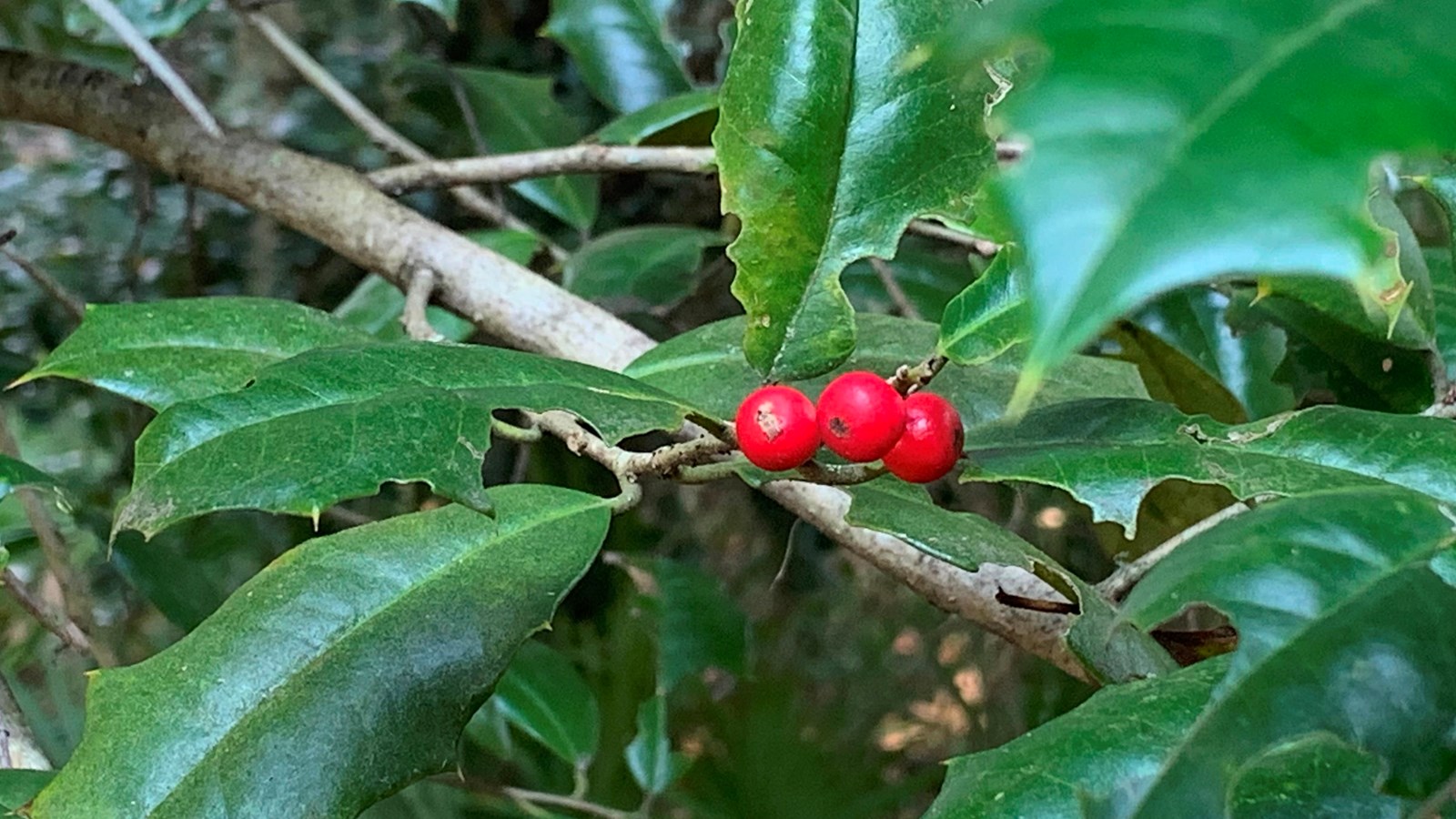Last updated: January 28, 2025
Place
Nightingale Trail - Stop 5 American Holly

NPS photo
American Holly “Ilex opaca”
This evergreen tree is easily identified by the spiky leaves seen so frequently during winter holidays. Female hollies have red berries that are poisonous to humans: however, wildlife prize the fruit. At least 20 different songbirds, especially thrushes, Mockingbirds, Robins, Catbirds, Bluebirds, and Thrashers eat the berries on the tree. Wild Turkeys and small mammals eat the berries that drop. White-tailed Deer browse the foliage. The wood was harvested for furniture and canes. It takes dye easily and was often substituted for ebony in musical instruments.
This evergreen tree is easily identified by the spiky leaves seen so frequently during winter holidays. Female hollies have red berries that are poisonous to humans: however, wildlife prize the fruit. At least 20 different songbirds, especially thrushes, Mockingbirds, Robins, Catbirds, Bluebirds, and Thrashers eat the berries on the tree. Wild Turkeys and small mammals eat the berries that drop. White-tailed Deer browse the foliage. The wood was harvested for furniture and canes. It takes dye easily and was often substituted for ebony in musical instruments.
